Japanese Knife, Japanese Traditional Crafts
Secret of Honyaki – What You Must Know Before Buying This Pricey Japanese Knife
When shopping for new kitchen knives, you are likely to run into the words honyaki and kasumi in the names and descriptions of high-end and consumer-grade utensils. Appearing on the websites of an increasing amount of knifemakers, you might be wondering if the flashy words honyaki and kasumi aren’t just attempts to wow customers with a taste of ‘authentic’ Japanese language.
In fact, the distinction is real – honyaki and kasumi knives are two very different things. This difference starts with the materials and methods used in forging, ending with the level maintenance required by each. Neither is stainless and both include high-end ‘carbon’ steel, the difference in grade and composition of these carbon steels setting one apart from the other. Finally, the biggest and perhaps most easily recognizable difference between these two types of knives is their price. While the cheapest kasumi knives range in price from under $100 (USD), a true, full-sized honyaki kitchen knife may very well run you $1000.
A Honyaki knife sold over 200,000 JPY = USD $1,800 or more (Image: seriouseats.com)
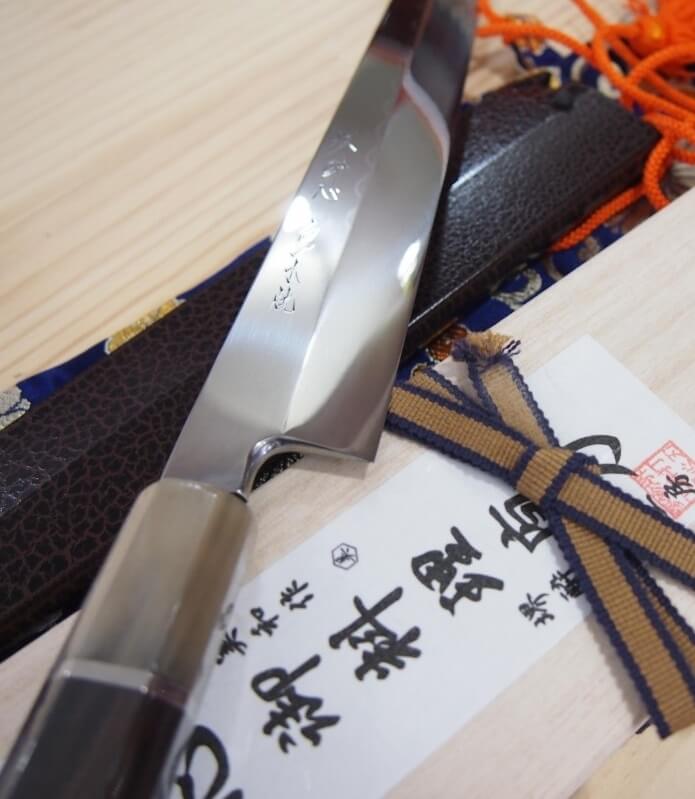
Now, a quality Japanese knife should last you a lifetime. It should be your goal to obtain the legendary, unmatched performance this country’s blades are known for. So, before opening your wallet and investing in what is sure to become your kitchen’s most important tool, we need to answer the following questions: Why is a honyaki knife so expensive? When is it worth the extra cost of admission? What should you know before deciding between the two types? Finally, is it possible that an affordable, kasumi knife of layered, mixed steel might outperform the world’s most exclusive and expensive honyaki variant? Let’s take a look.
Honyaki Japanese Kitchen Knives: The World’s Ultimate Kitchen Utensil
Honyaki knives are said to be the closest thing to the swords of ancient Japan. Made of a single, pure steel that is selected, forged, and hammered by only the most skilled artisans and entirely by hand, honyaki knives offer unmatched levels of hardness throughout the blade. For all the time, effort, and materials that go into just a single honyaki blade, the consumer is asked to pay a hefty price. These are the most expensive Japanese knives on the market. As a result, they carry some of the most distinct markings and characteristics of this ancient trade. Still, the extreme craftsmanship, rarity, cost, and maintenance required by honyaki blades might make their purchase difficult to justify by those of us not working at a Michelin starred sushi bar or traditional Japanese banquet hall.
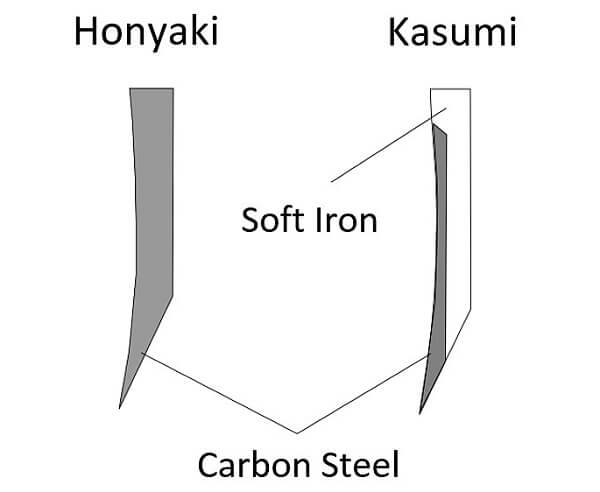
Sometimes referred to as ‘mono-steel,’ honyaki knives are crafted using only one type of steel throughout. Non-laminated, a unified, single steel piece comprises the core, face, and edge of the knife. Using only the best steel throughout the entirety of the blade, the cost of production is high from the start. With either tamahagane steel, shiro-hagane white steel, or ao-hagane blue steel, only the most senior, experienced artisans of Japan’s top knifemaking workshops set to work making their most difficult and expensive knives. The process is as close to the ancient art of Japanese sword making as you are going to get: a single, uniformly high-quality, high-carbon steel is carefully heated and hammered into shape. For the most expensive variants, the artisan carefully and differentially hardens the blade by quenching in water several times throughout this process. The result is a stiff center or spine for its body and a comparatively softer outside with which to make the sharpened edge. Whether water-quenched or oil-quenched, the uniform composition of honyaki knives makes them the hardest around. It is this hardness that allows for the thinnest, steepest angle edges resulting in the absolute sharpest cut possible.
This is the pinnacle of Japanese knifemaking. What’s more, due to the high heat, difficult quenching methods, and the lack of forgiveness or any sort of flexibility of these mono-steel blades, even the best knifemakers lose many to cracks and breaks along the way. This high chance of failure drives prices up further, as the rarity of the honyaki knives increases with every broken blade.
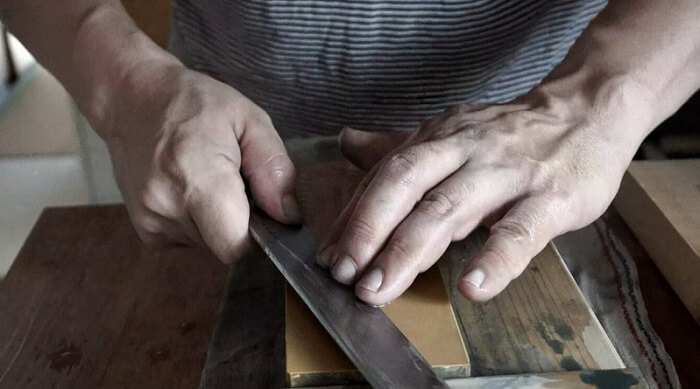
(Image: hitohira-japan.com)
The unmatched hardness a successful forge is able to produce – that which generations of samurai and warlords bet their life on in battle – comes with great responsibility, however. Maintenance of honyaki blades is made much more complicated by the fact that these high-end steel – ‘pure’ in the sense that they do not include the chromium alloy that makes a steel a stainless steel – are highly susceptible to rust and other corrosion. Sharpening can take up to an hour of continued and careful swiping on a specialized and similarly cared-for whetstone. No electronic handheld sharpeners of honing-rods allowed! Additionally, while this stiffness means that honyaki knives will cut meat or vegetables with a slice unlike anything you have ever seen, they are not suitable for cutting bones of any type. Finally, their incredible stiffness means that they will no bend or give way to irregular pressure. One drop from the counter or slam in the drawer could crack or even break these knives in two!
Still, for their incredible cutting ability, as well as the respect and honour owning one of these exclusive knives gets you from your colleagues, many of the world’s top chefs have opted for the traditional and rare honyaki Japanese kitchen knife. The question you have to ask yourself is if you can justify the money, time, and attention these ancient blades require. For example, if you are like me, you might find that the added pressure that comes with owning a honyaki negates many of the benefits professional chefs swear by.
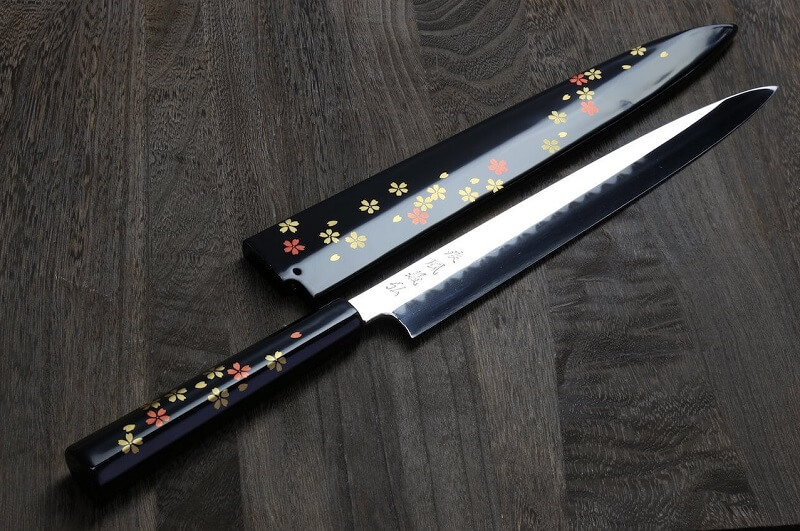
Finally, knowing what we now do about the legendary and expensive honyaki knives, do not expect to find one with a reduced or suspiciously low price-tag. If the price seems too good to be true, it definitely is! Watch out for the careless use of the word honyaki, especially by foreign knife makers looking to break into the market by using eye-catching buzzwords. True honyaki knives are never mass produced.
Kasumi Knives: Honyaki’s High Performance, Cost-Effective, Modern Cousin
Wherever you see honyaki knives, you will likely see a much wider variety of kasumi steel blades at much more affordable prices. Kasumi knives are named for the misty appearance of their exterior layering. That’s right, unlike the mono-steel, uniform body of the honyaki knives, kasumi utensils have layers! This is the first and most important difference. By mixing steels, artisans can lower not only the cost of production, but also the difficulty and length of time required to forge them.
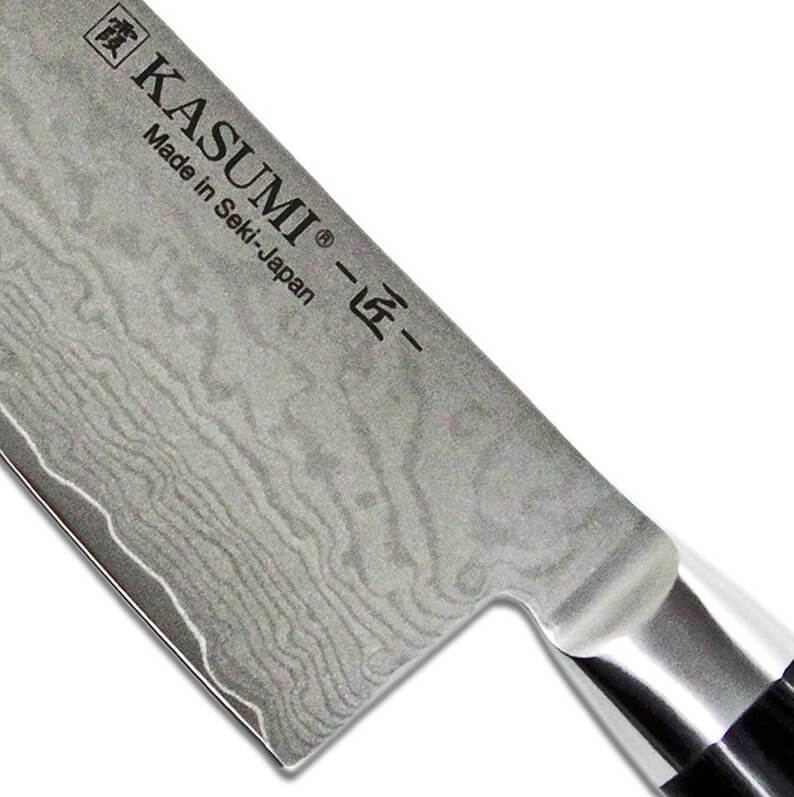
(Image: gourmet-versand.com)
But how does their performance compare? Lately, a number of experts have noted that technological breakthroughs in the production of high-quality, composite ‘soft-steels’ have provided Japan’s best knifemakers with alternatives to the expensive white- and blue-steels used in making honyaki knives. Thus, by using the hardest steel to make only the central core of the blade, they can apply one or more layers of various other, softer steels around it to make a lightweight base for an easy to manage sharpened edge. Thus, all the benefits of the stiff, strong body of a honyaki, without the worry of breakage or chipping thanks to the use of comparatively soft steel around the outside. You will notice this layering right away, as it results one or more clearly visible lines above the cutting edge. After making the jump up from cheaper stainless steel knives, these layered knives (their three-part variants sometimes referred to as san-mai) are certainly the most popular of Japan’s high performing kitchen knives.
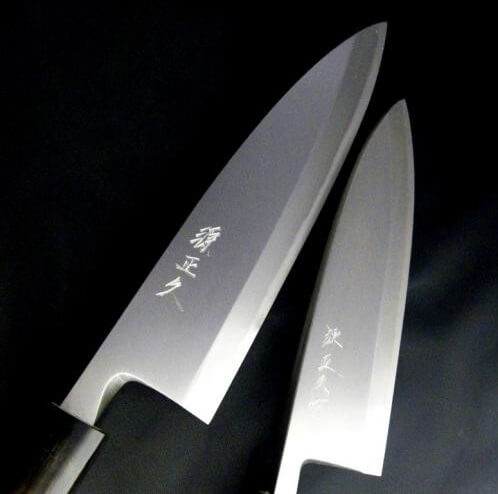
(Image: hamonoya.com)
Unlike the mono-steel bodies of honyaki, these layered knives are repairable should they become chipped or warped. Moreover, the softer outside steel is easily sharpened, making the kasumi knife a much better fit for the at home chef. With all the greatest features of Japan’s historic knifemaking traditions, it is likely that a kasumi knife will suit your needs at home better than an ultra-specialized honyaki variant.
Which One for Your Kitchen?
Easier to store, maintain, purchase, and appreciate, Japanese kasumi layered knives have continue to perform at a high level in homes and kitchens around the world. And yet, the mono-steel honyaki looms in the distance, calling you with its historic craftsmanship, rarity, and ultra-exclusive price tag. Remember that just about anyone can put the word ‘honyaki’ on a blade these days. The best authentic knifemakers will be able to carefully explain what is that makes their honyaki stand out and quickest way to identify a fraud is the price tag. For all the blood, sweat, and tears their best artisans have poured into these knives, even the most desperate shop won’t part with their honyaki knives at a discounted price. If the price seems too good to be, it probably is.
Remembering what we have learned here today about the care and respect these knives demand from their owners, it is important to think carefully before selecting a honyaki knife.
Because of the developments in forging techniques and technologies of late, kasumi knives have in some cases come to perform as well if not better than honyaki pure steel knives. Considering the dramatic price difference, as well as your own level of experience using and maintaining such high calibre knives, it might very well be that a kasumi mixed steel knife is the more cost effective and useful option. With the right knowledge, you are certain to find a kitchen partner on whom you can rely on for a lifetime of high-end performance.

Author - Jay
In my spare time I enjoy watching baseball, tasting local cuisine, and exploring by road and rail. Having lived in several cities around the world, I have an appreciation for local as well as international histories and cultures. Excited by cultural and social exchange, it is my hope that this blog will help promote an interest in Japanese traditional wares and practises by introducing you to their history and meanings.

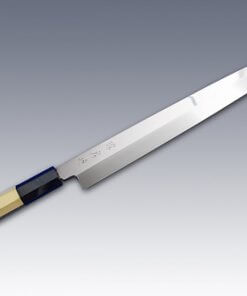
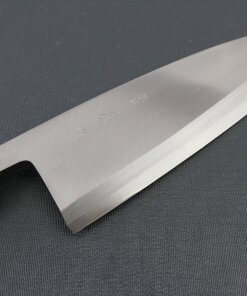
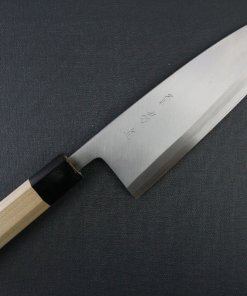
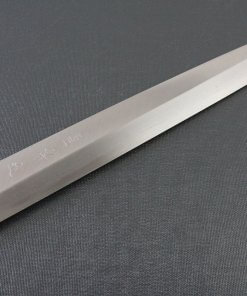
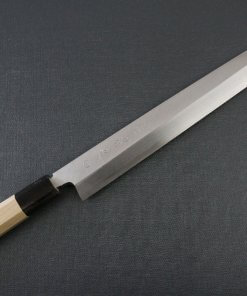
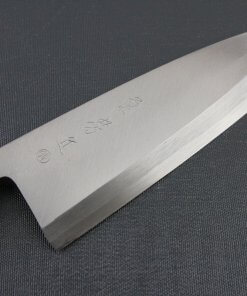
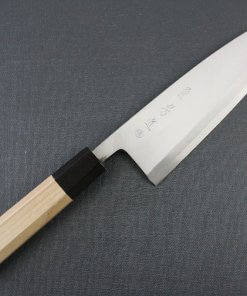
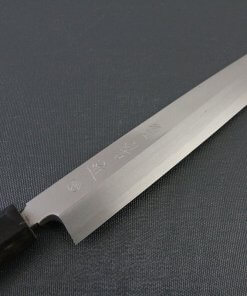
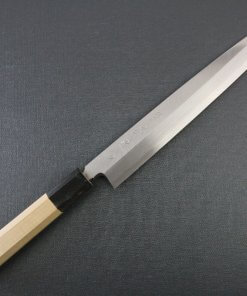
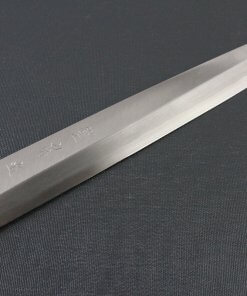
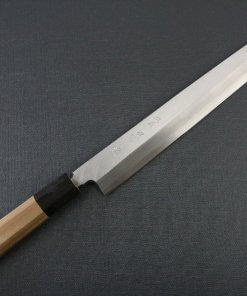
About Orientalsouls.com
Learn and Buy Japanese Craftsmanship, Tradition & Culture
OrientalSoul.com is the online shop where you can buy traditional crafts of Japan.
We only sell selected authentic products in which true spirits of Japanese craftsmanship exist.
You may be able to find similar products in other shops for lower prices. However, we sell products based on fair prices that worth labor and value of experienced craftsmen.
In addition, we introduce stories about product history, how a product is made, what makes it different from others, and how the product enriches your life!